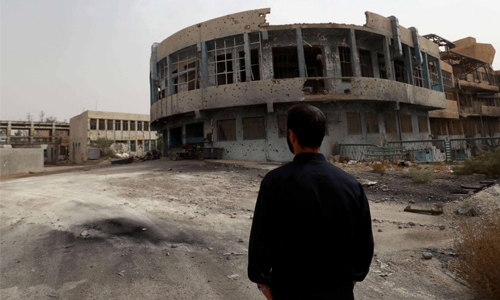In Syria, even the hospitals are not safe
After eight brutal years, it is hard to find anything shocking about the Syrian civil war. But somehow, the government forces under President Bashar al-Assad always find a way. On May 15, Syrian bombs destroyed the Tarmala Maternity and Children’s Hospital in Idlib, the 19th medical facility attacked since late April. Assad’s campaign against hospitals is not just inhumane — it represents one of the most repellent aspects of modern warfare.
Hospitals were once off limits; even in conflicts where the international laws of war were routinely flouted, medical facilities were spared. That has changed. Governments increasingly turn on civilians, and hospitals and medical workers are being deliberately targeted in an effort to silence them. Doctors are tortured and killed. Health care workers have been robbed, looted, beaten and murdered in Central African Republic, Congo, Lebanon and Myanmar. Nowhere is this more obvious than Syria. In May, Rola Hallam, a British-trained Syrian anesthetist, crossed the border from Turkey into Ghandoura, a small town in the northern Aleppo countryside.
After passing through several armed checkpoints, she reached the Hope Hospital for Children, which she and her colleagues had built in just three months in 2017. Hope is the seventh hospital she and her team — an organization called CanDo — have built since 2016 after six medical facilities in Aleppo, including a children’s hospital, were destroyed by Russian and Syrian government planes. She thought how she had planned the site of the new hospital, trying to find a place where it was less likely to be attacked. “That’s a question we should not have to ask,” she told me. “Hospitals should not be bombed.” But in Syria, hospitals are a tool of war.
Dr. Hallam said there have been 91 attacks since April 2017. This means that hospitals cannot treat the sick or dying. It means people with chronic illness have no care. No maternity clinics or diagnostic labs. The government’s campaign against hospitals goes back to the beginning of the war, when the protests against the government started. President Assad, an ophthalmologist, believed that doctors who treated bleeding and battered protesters were themselves anti-government partisans. Last month, a group of 400 Syrian medics, rescue workers and humanitarian activists signed a letter calling on the key players in northwest Syria — Russia, Turkey and members of the United Nations Security Council — to stop the bombing in the Idlib region, which is supposed to be a demilitarized zone.
President Assad says that the attacks are necessary because terrorists use hospitals as arms depots (an unfounded claim); he also says that most of the bombs that do hit hospitals are errant. But Susannah Sirkin, the policy director of Physicians for Human Rights, believes that the bombings are systematic, amounting to crimes against humanity. She says that since 2011, her organization has documented 566 individual attacks on about 350 Syrian health care facilities. More than 890 medical personnel have been killed, some in attacks on the medical facilities where they worked. What explains such an extensive and cruel campaign? In President Assad’s mind, somewhere along the line, “opposition” became a synonym for “civilians,” many of whom don’t support either side but just want to stay alive.
The most threatening way you can terrorize a population is to bomb hospitals and kill doctors. And by killing doctors, who are often the community leaders, you can break down society faster and force surrender quicker. You kill the very people who can heal a community. “When they kill one doctor, they kill 1,000 civilians,” Dr. Hallam said. And there is another reason for the attacks. In an isolated villa on the grounds of the United Nations in Geneva, war crime investigators are methodically going through thousands of hours of video recordings of bombings taken by civilians. This evidence will be used to build cases in war crimes tribunals.
By killing doctors, the Assad regime and its Russian allies destroy further evidence — and witnesses. It is the same reasoning behind socalled double-tap bombings, often deployed by Russian forces in Syria. Many rescue workers record their work — the famed White Helmets attach cameras to their bodies to document an attack and their response. As they get to work, though, another round of bombing begins, aiming to kill the very workers trying to save the victims of the original attack. President Assad is intent on ending the war by taking the last piece of Syria to resist his control — Idlib. That is why so many hospitals in the area have been attacked over the past month.
“It’s a tactic to get people to surrender,” said Dr. Hallam, who tries to understand the logic of the bombers. “What goes through their minds as they decide to kill people in a hospital? I think war is so blinding. I think they dehumanize them so they don’t even see them as human beings, worthy of a breath.” Dr. Hallam, who first arrived in Britain as an 11-year-old refugee who could not speak English, left Syria a few days after visiting Hope Hospital. For the moment, it is safe. “Will I see the hospital again?” she said. “Will I see the staff again?” Nothing and no one is ever safe in Syria, she said. Not even hospitals.
Related Posts

